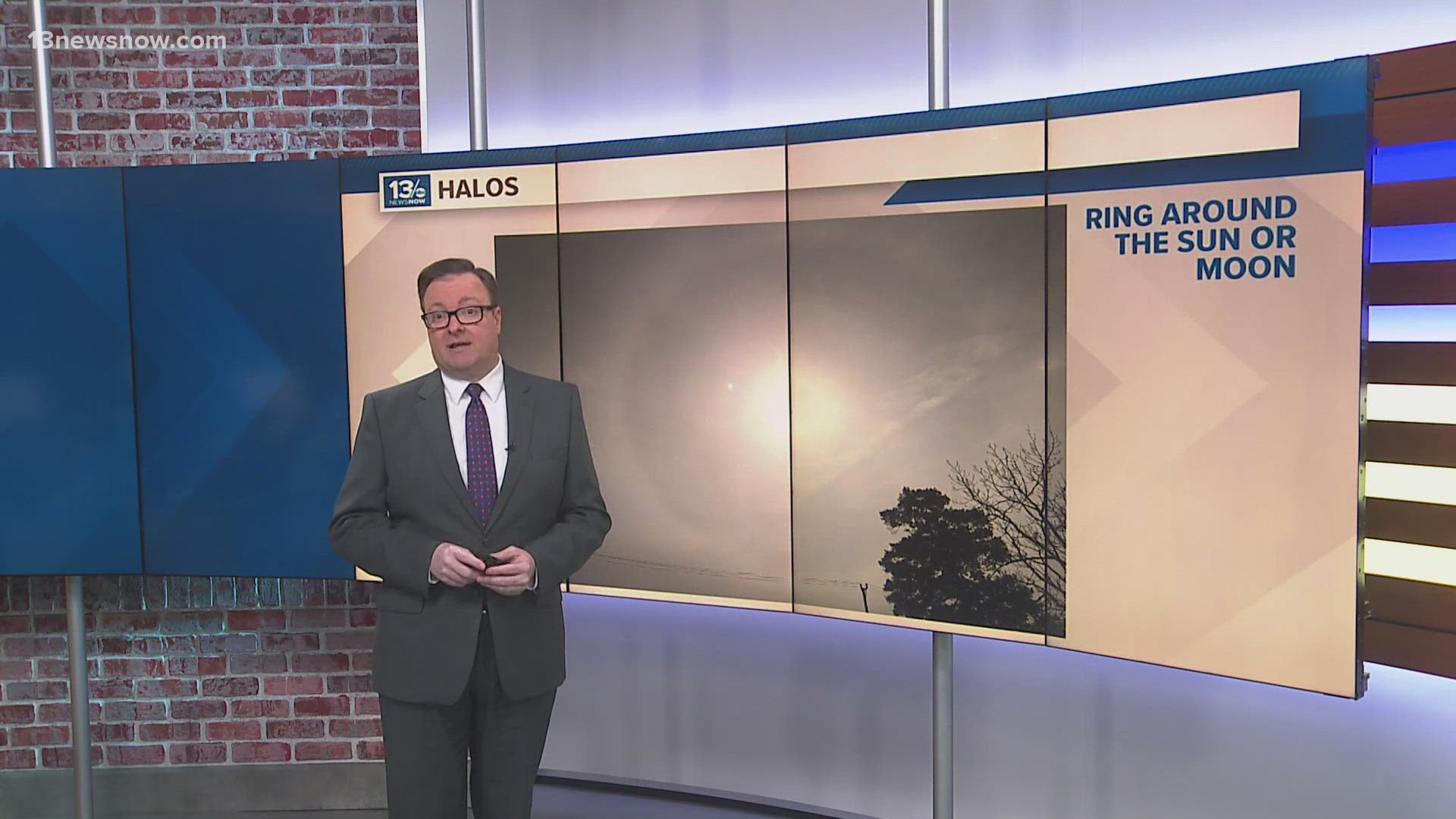NORFOLK, Va. — When high, thin cirrus clouds are overhead, it’s not uncommon to see a halo -- a circular ring of light --appear around the sun. It is often characterized by its vibrant, multicolored appearance.
This weather phenomenon is not only beautiful but also a good example of how light from the sun can interact with different elements in our atmosphere to create some stunning atmospheric optics.
Similarly, you have probably seen a halo at night, especially with a nearly full or completely full moon present in the sky.
There's even an old weather proverb you might have heard before: “Ring around the moon means rain soon.” There is some truth behind it, and it can also apply to the sun.
A lot goes into the creation of these halos. Ingredients include light from the sun or moon and those high, thin cirrus clouds. These clouds are usually three to six miles overhead, or about 15,000 to 32,000 feet in the atmosphere. These clouds are made up of millions upon millions of tiny ice crystals. Each of these hexagonal crystals acts as a prism, refracting light from the sun or moon. The crystals are oriented perfectly with respect to our eyes, producing the perfect halo.
If you are an avid weather watcher, then you know that cirrus clouds often spread overhead in advance of a weather system that brings precipitation.
While the halo itself doesn’t guarantee rain, it does suggest that the atmospheric conditions conducive to halo formation are also associated with changing weather patterns and the likelihood of rain soon.

